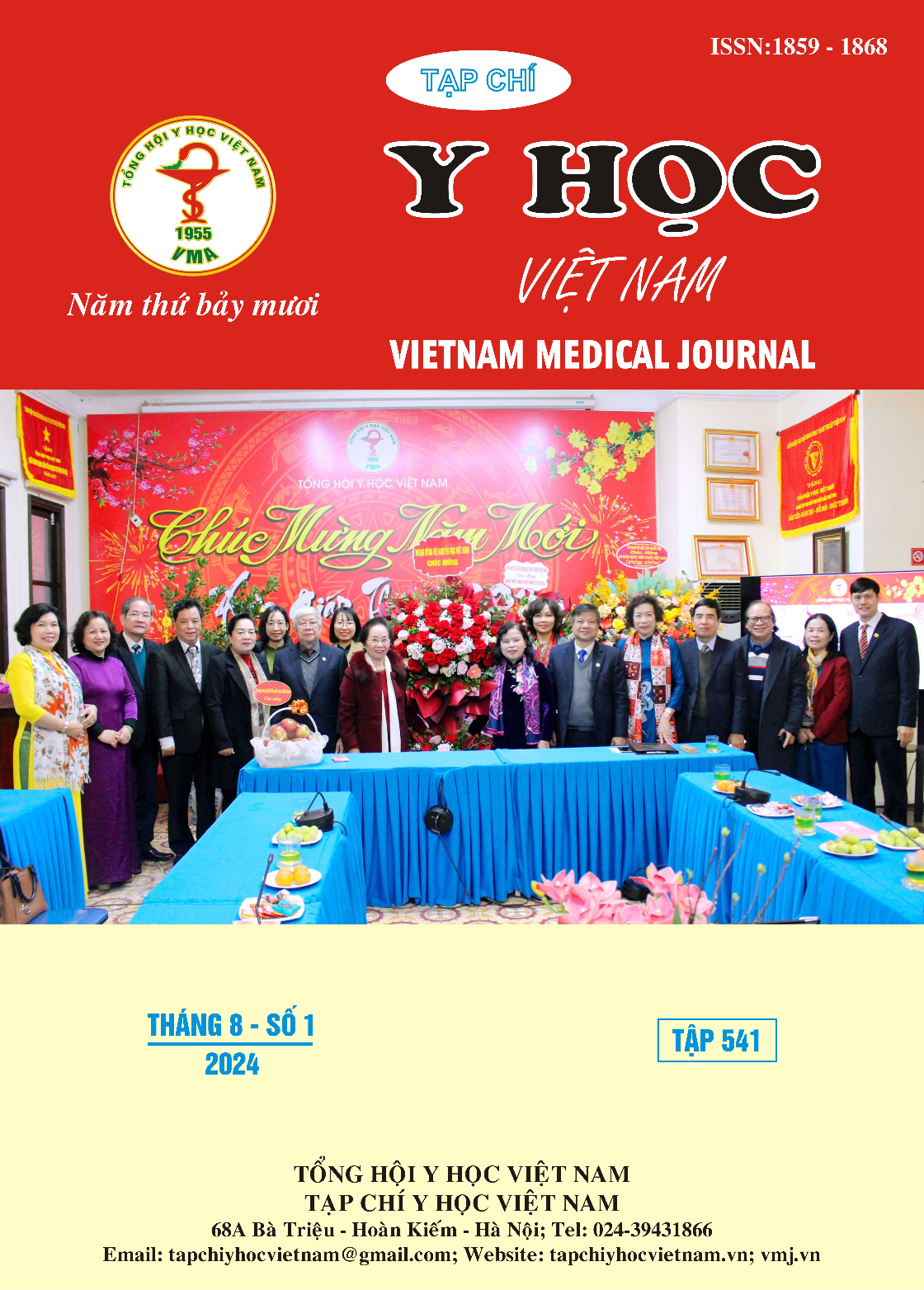THE VALUE OF THE APRI INDEX IN DIAGNOSING SEPSIS-ASSOCIATED LIVER INJURY (SALI) IN PEDIATRIC PATIENTS WITH SEPSIS
Main Article Content
Abstract
Objectives: In children, sepsis has a high rate of liver dysfunction (39.9%) and a high mortality rate (54% - 68% depending on the study). This study aimed to evaluate the value of the APRI index in diagnosing sepsis-associated liver injury (SALI) in patients with sepsis at the PICU, Vietnam National Children's Hospital. Subjects and methods: A descriptive study was conducted on 198 pediatric patients with sepsis in the PICU, Vietnam National Children's Hospital, from May 2022 to April 2023. Results: The SALI rate in pediatric sepsis patients was 32%. The median age of patients was 12.4 months. The boy/girl ratio was 1.9/1. The patient was admitted to the PICU with severe conditions, and the mean pSOFA score was 8.2. The rate of positive bacteria in blood and fluid cultures was 52%. The median hospital stay was 20 days. At the first 24 hours of admission to the intensive care unit, APRI was powerful in predicting SALI in children (AUC: 0.919, p<0.001) with a sensitivity of 84.1 % and a specificity of 84.2 % at the cut-off point of 0.73. The cut-off point of ARPI was 0.701, with a sensitivity of 62.3% and a specificity of 71.4% for predicting mortality in pediatric patients with sepsis. Conclusion: During the first 24 hours of admission to the PICU, the APRI index could diagnose SALI predict mortality in pediatric patients with sepsis.
Article Details
Keywords
APRI, sepsis-associated liver injury (SALI), sensitivity, specificity, children
References
2. Goldstein B, Giroir B, Randolph A. International pediatric sepsis consensus conference: Definitions for sepsis and organ dysfunction in pediatrics*: Pediatric Critical Care Medicine. 2005;6(1):2-8.
3. Dou J, Zhou Y, Cui Y, Chen M, Wang C, Zhang Y. AST-to-Platelet Ratio Index as Potential Early-Warning Biomarker for Sepsis-Associated Liver Injury in Children: A Database Study. Front Pediatr. 2019;7:331.
4. Adeli K, Higgins V, Trajcevski K, White-Al Habeeb N. The Canadian laboratory initiative on pediatric reference intervals: A CALIPER white paper. Crit Rev Clin Lab Sci. 2017;54(6):358-413.
5. Saini K, Bolia R, Bhat NK. Incidence, predictors and outcome of sepsis-associated liver injury in children: a prospective observational study. Eur J Pediatr. 2022;181(4):1699-1707.
6. Godlief R, Hakim DDL, Prasetyo D. Relationship between aspartate aminotransferase to platelet ratio index and liver injury in pediatric sepsis. Paediatrica Indonesiana. 2021;61(3):149-154.
7. Kobashi H, Toshimori J, Yamamoto K. Sepsis-associated liver injury: Incidence, classification, and clinical significance. Hepatol Res. 2013; 43(3):255-266.
8. Dou J, Shan Y, Cui Y, Wang C, Zhang Y. The aspartate transaminase to platelet ratio index( APRI) as a risk factor and predictor for sepsis-asso-ciated liver injury in children. Chinese Pediatric Emergency Medicine. Published online 2018:22-26.
9. Manoppo J, Ipardjo A, Masloman N, Langi F. Association between Aspartate Aminotransferase to Platelet Ratio Index with Sepsis-Associated Liver Injury and Outcome in Children. Open Access Macedonian Journal of Medical Sciences. 2023;11:151-155.


